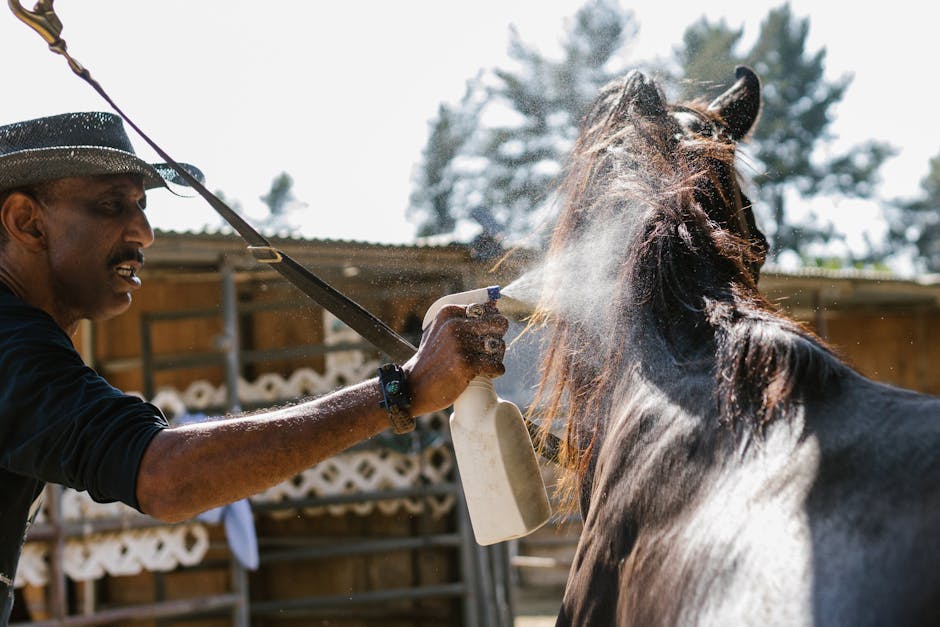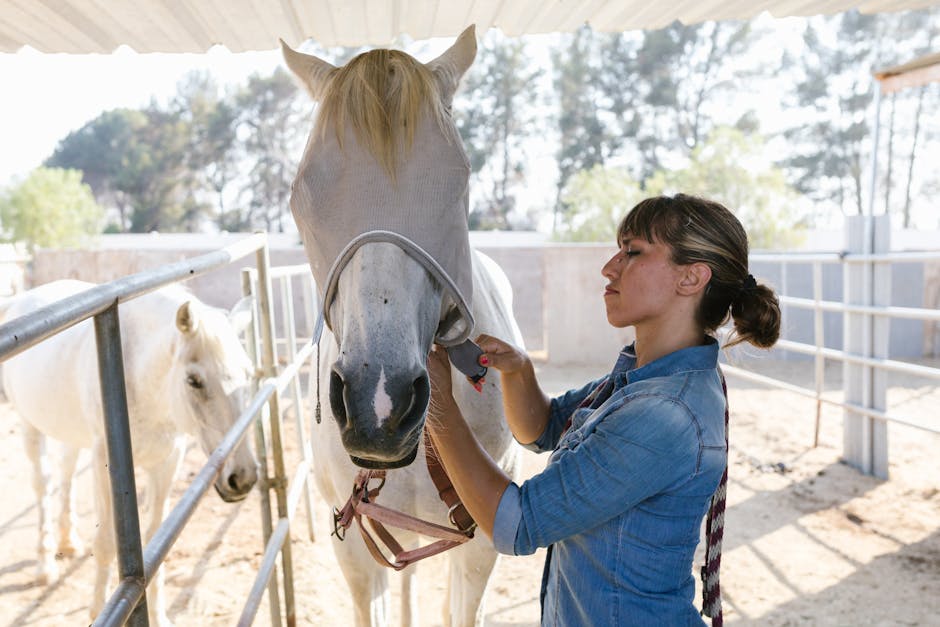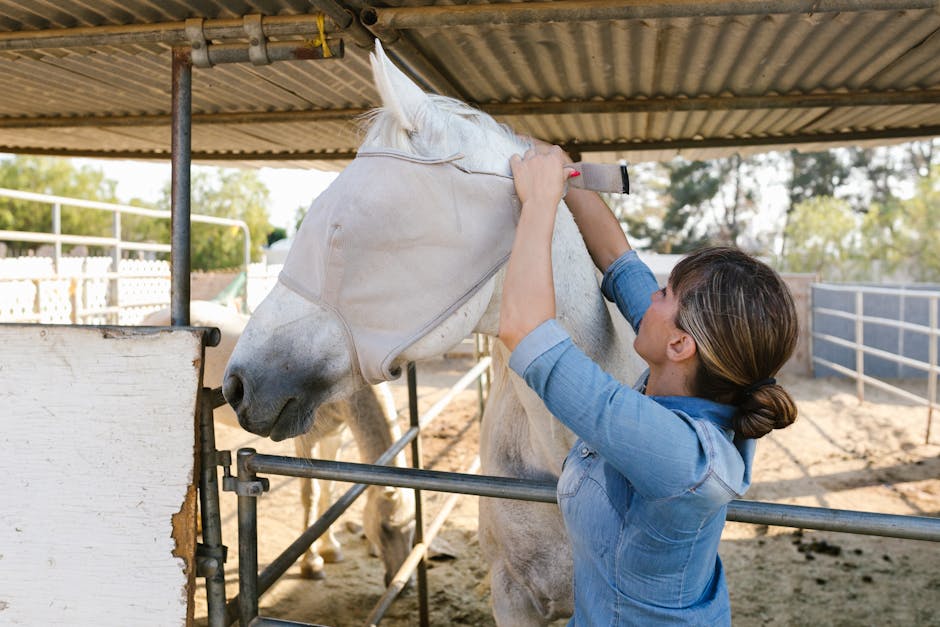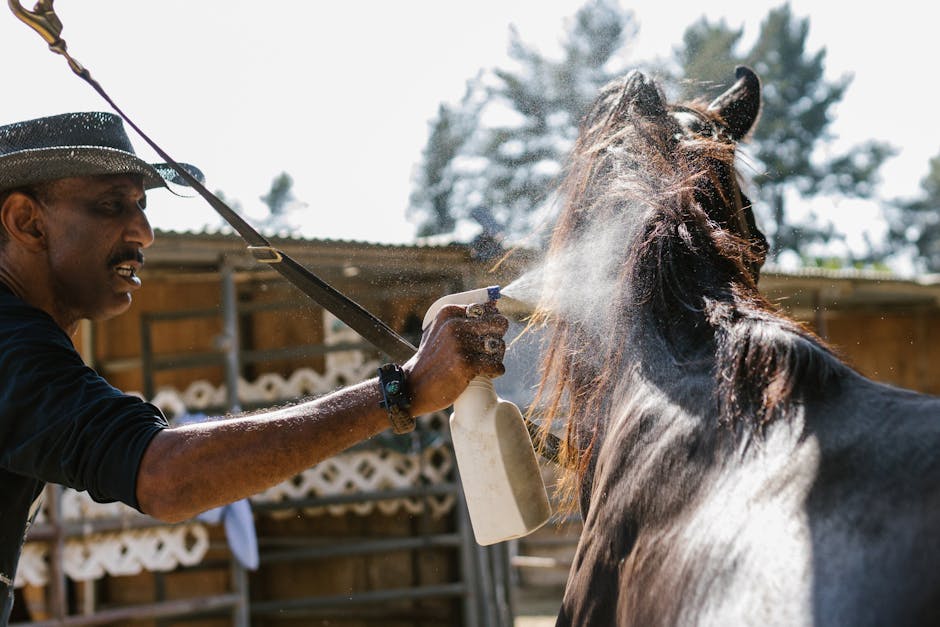Barn & Stable Fly Spray: Your Ultimate Guide to Effective Fly Control
Dealing with flies in your barn or stable can be a constant battle. These pesky insects not only annoy your animals but also pose significant health risks, spreading diseases and reducing productivity. Choosing the right barn and stable fly spray is crucial for effective control and maintaining a healthy environment for your livestock. This comprehensive guide will walk you through everything you need to know to make an informed decision and conquer your fly problem.
Understanding the Enemy: Common Flies in Barns and Stables
Before diving into fly sprays, it’s essential to understand the types of flies you’re dealing with. The most common culprits include:
- House Flies: These ubiquitous insects are attracted to manure and decaying organic matter, spreading bacteria and pathogens.
- Stable Flies: Known for their painful bites, stable flies target both animals and humans, causing significant irritation and discomfort.
- Horn Flies: These small, biting flies cluster around the backs and flanks of cattle, leading to weight loss and reduced milk production.
- Face Flies: These flies are particularly bothersome to cattle, as they congregate around the eyes and face, causing irritation and reduced grazing.
Identifying the predominant fly species in your barn or stable will help you choose the most effective fly spray.

Choosing the Right Barn and Stable Fly Spray: Key Considerations
The market offers a wide array of barn and stable fly sprays, each with its own strengths and weaknesses. Here’s what to consider when making your selection:
1. Active Ingredients:
The active ingredient is the key to a fly spray’s effectiveness. Common active ingredients include pyrethrins, permethrin, and organophosphates. Pyrethrins are naturally derived and generally considered safe for animals when used as directed. Permethrin is a synthetic pyrethroid, offering longer-lasting protection. Organophosphates are more potent but require careful handling and application. Always read the label carefully to understand the active ingredient and its potential impact on animals and humans.
2. Residual Effects:
Some fly sprays provide residual control, meaning they continue to kill flies for several days or weeks after application. This is particularly beneficial in areas with high fly populations. Look for products that advertise residual effectiveness and choose one that suits your specific needs.
3. Application Method:
Fly sprays come in various formulations, including aerosols, ready-to-use sprays, and concentrates. Aerosols are convenient for quick applications, while ready-to-use sprays eliminate the need for mixing. Concentrates offer cost savings but require dilution before use. Consider the size of your barn or stable and the ease of application when making your choice.
4. Safety for Animals and Humans:
Safety is paramount. Always choose a fly spray labeled for use around animals and humans. Follow the manufacturer’s instructions carefully, paying attention to application rates, safety precautions, and pre-cautionary measures. Keep children and pets away from treated areas until the spray has dried completely.
5. Environmental Impact:
Consider the environmental impact of your chosen fly spray. Opt for products that are less harmful to beneficial insects and the environment. Look for labels that indicate biodegradability or reduced toxicity.

Effective Fly Control Strategies: Beyond Fly Spray
While fly sprays are an important tool in fly control, a comprehensive approach is crucial for long-term success. Consider implementing the following strategies in conjunction with your chosen fly spray:
- Manure Management: Regularly remove manure from stalls and pastures to eliminate breeding grounds for flies.
- Hygiene Practices: Maintain cleanliness in your barn or stable. Clean and disinfect feeding areas, water troughs, and other areas where flies tend to congregate.
- Fly Traps: Install fly traps to capture adult flies, reducing their population and preventing further breeding.
- Biological Control: Introduce beneficial insects or nematodes that prey on fly larvae.
- Fly Screens and Doors: Prevent flies from entering your barn or stable by installing screens and sealing any gaps or cracks.
Frequently Asked Questions (FAQs)
Q: How often should I apply barn and stable fly spray?
The frequency of application depends on the product and the level of fly infestation. Always refer to the product label for specific instructions.
Q: Are all barn and stable fly sprays safe for all animals?
No. Some fly sprays are specifically formulated for certain animal species. Always check the label to ensure the product is safe for your animals.
Q: What should I do if my animal is exposed to fly spray?
If your animal shows signs of distress after exposure to fly spray, contact your veterinarian immediately.
Q: Can I use household fly spray in my barn or stable?
It’s generally not recommended. Household fly sprays may not be effective against barn and stable flies and may be harmful to your animals.
Q: How can I dispose of empty fly spray containers?
Follow the instructions on the product label for proper disposal. Many fly spray containers are recyclable.

By understanding the different types of flies, choosing the right fly spray, and implementing a comprehensive control strategy, you can create a healthy and comfortable environment for your animals and yourself. Remember to always read and follow the instructions on the product label to ensure safe and effective use.

